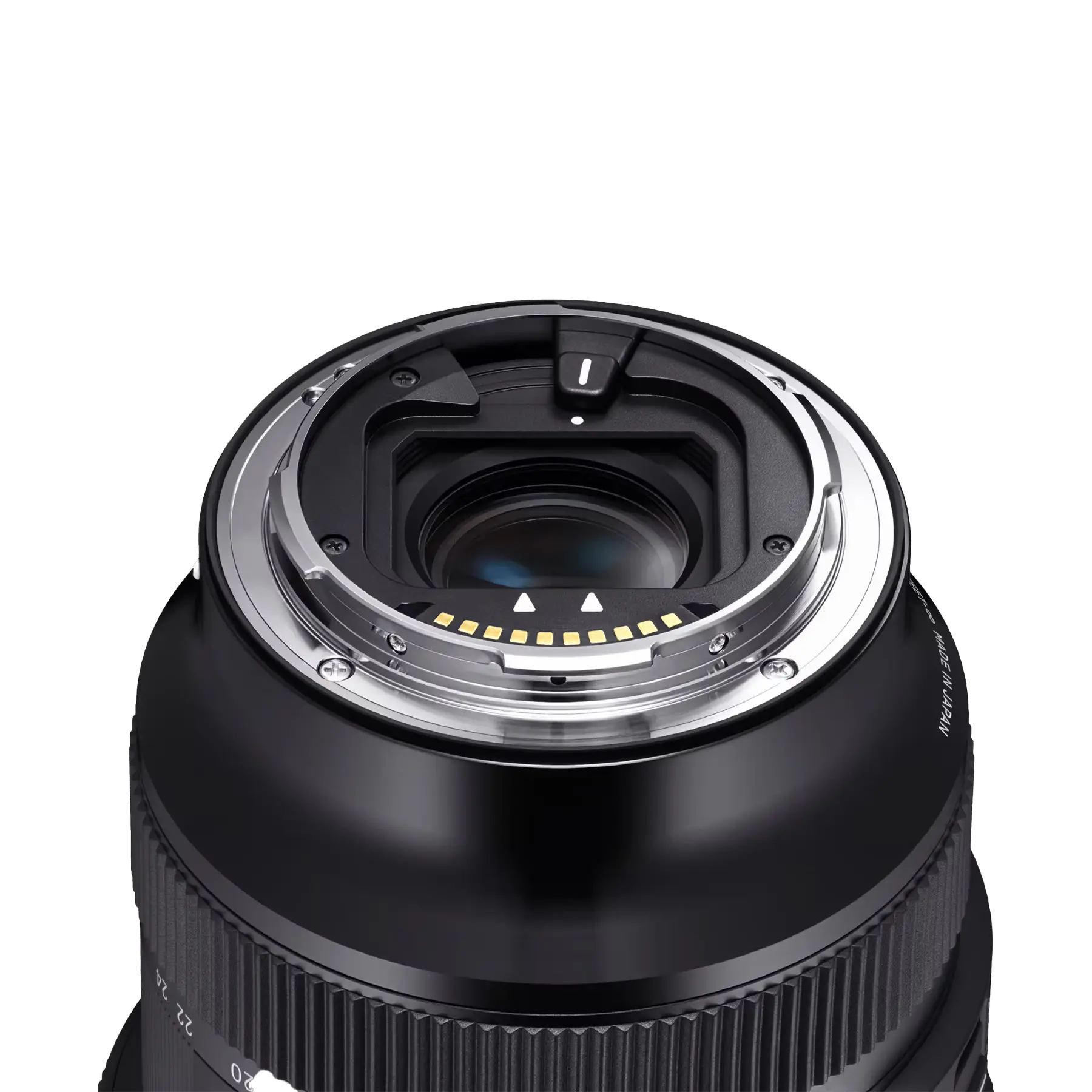Product Description
Sigma 14-24mm f/2.8 DG DN Art Lens – Sony E
The Gold Standard in Ultra-Wide Zooms for Mirrorless
The Sigma 14-24mm f/2.8 DG DN Art Lens is a professional ultra-wide zoom designed exclusively for Sony E-mount full-frame mirrorless cameras. Offering a sweeping 114° angle of view at 14mm, a constant f/2.8 aperture, and uncompromising optical performance, this lens is the definitive wide-angle zoom for landscapes, architecture, interiors, events, and astrophotography.
Compact, robust, and beautifully engineered, it’s widely regarded as the benchmark ultra-wide lens for mirrorless photographers.

Key Features
-
Full-frame coverage for Sony E-mount cameras
-
Ultra-wide 14–24mm focal length for landscapes, interiors, and architecture
-
Constant f/2.8 aperture across the zoom range
-
Advanced optics: 18 elements in 13 groups (1 FLD, 5 SLD, 3 aspherical, including one large-diameter aspherical)
-
Rounded 11-blade diaphragm for smooth, natural bokeh
-
Super Multi-Layer & Nano Porous Coatings for reduced flare and ghosting
-
Rear filter holder with included template for custom gel filters
-
Fast, quiet autofocus driven by a stepping motor
-
Customisable AFL button for added control
-
Internal zoom & focus – ideal for gimbal use
-
Weather-sealed brass mount with dust and moisture resistance
-
Made in Aizu, Japan – precision-crafted at Sigma’s sole production facility

Professional Optical Performance
The 14-24mm f/2.8 DG DN Art is built for photographers who demand edge-to-edge sharpness and accurate rendering. Its optical formula of 18 elements in 13 groups eliminates chromatic aberration, distortion, flare, and vignetting. Combined with Sigma’s Nano Porous Coating, it ensures high contrast, vivid colours, and exceptional clarity—even when shooting into direct sunlight.

Built for Reliability & Creative Control
-
Internal zoom mechanism keeps the lens length constant—perfect for balance on a gimbal or stabiliser.
-
Rear filter holder makes it possible to use compact gel filters despite the bulbous front element and fixed petal hood.
-
Thermally Stable Composite (TSC) exterior matches the thermal behaviour of internal aluminium parts for consistent performance in varying temperatures.
-
Weather-sealed brass bayonet ensures long-term durability in demanding environments.

Low-Light & Event Performance
The fast f/2.8 aperture is ideal for handheld shooting in low-light situations such as weddings, events, and indoor venues. It allows faster shutter speeds and more control over depth of field, enabling creative foreground isolation even at ultra-wide angles.

Specifications
-
Lens Construction: 18 elements in 13 groups
-
Angle of View: 114.2° – 84.1°
-
Diaphragm Blades: 11 (rounded)
-
Aperture Range: f/2.8 – f/22
-
Minimum Focus Distance: 28cm
-
Maximum Magnification: 1:7.3
-
Filter Compatibility: Rear filter holder (no front thread)
-
Dimensions: 85.0mm × 131.0mm
-
Weight: 795g
-
Mount: Sony E (also available in L-Mount)

Why Choose the Sigma 14-24mm f/2.8 DG DN Art?
This lens is the ultimate wide-angle zoom for Sony full-frame mirrorless cameras. From night sky photography to sweeping landscapes and detailed interiors, it delivers professional results in every situation. With a compact design, robust construction, and flawless optical performance, the Sigma 14-24mm f/2.8 DG DN Art is a true flagship lens for serious creatives.

Payment & Security
Your payment information is processed securely. We do not store credit card details nor have access to your credit card information.




















